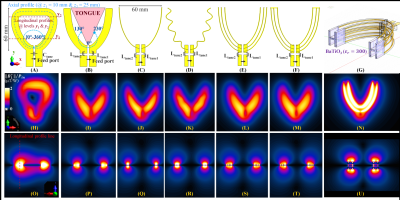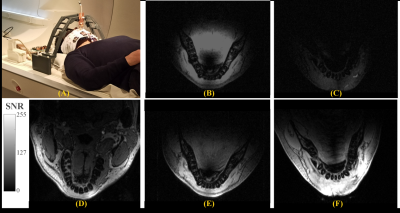Ali Caglar Özen1,2, Djaudat Idiyatullin3, Gregor Adriany3, Steve Jungst3, Naoharu Kobayashi3, Beth R. Groenke4, Michael Bock1, Michael Garwood3, and Donald R. Nixdorf4,5
1Deptartment of Radiology, Medical Physics, University Medical Center Freiburg, University of Freiburg, Freiburg, Germany, 2German Consortium for Translational Cancer Research Partner Site Freiburg, German Cancer Research Center (DKFZ), Heidelberg, Germany, 3Center for Magnetic Resonance Research and Department of Radiology, University of Minnesota, Minneapolis, MN, United States, 4Division of TMD & Orofacial Pain, School of Dentistry, University of Minnesota, Minneapolis, MN, United States, 5Department of Neurology and Radiology, Medical School, University of Minnesota, Minneapolis, MN, United States
1Deptartment of Radiology, Medical Physics, University Medical Center Freiburg, University of Freiburg, Freiburg, Germany, 2German Consortium for Translational Cancer Research Partner Site Freiburg, German Cancer Research Center (DKFZ), Heidelberg, Germany, 3Center for Magnetic Resonance Research and Department of Radiology, University of Minnesota, Minneapolis, MN, United States, 4Division of TMD & Orofacial Pain, School of Dentistry, University of Minnesota, Minneapolis, MN, United States, 5Department of Neurology and Radiology, Medical School, University of Minnesota, Minneapolis, MN, United States
Intraoral dipole antenna with high-permittivity caps at the dipole arms has better transmit efficiency and homogeneity. It also offers high resolution MRI with reduced FOV. Intraoral dipole combined with flexible extraoral coils can potentially improve clinical dental MRI.

Fig. 1. Comparison of the intraoral coils. (A)
Reference loop coil model with the line profile tracks and levels marked.
Planar dipole models with (B) ribbon arms, (C) wire arms, (D) meander wire
arms, (E) 3-wire arms, (F) 3-wire arms with shorted ends, and (G) 7-wire dipole
with high-εr cap. Field maps are shown in the
same columns. (H)-(N) Sensitivity within the tongue region is
lower in dipoles compared to the loop coil. (O)-(U) Ribbon and multi-wire
conductors have better sensitivity across the dipole arms. High-permittivity cap increases transmit efficiency
and homogeneity.

Fig.
4. A photo of the in vivo measurement setup. SNR maps at z = 10mm
away from the coil planes for intraoral B) loop, C) dipole, D) extraoral SLR
only, and SLR combined with E) loop and F) dipole in Tx mode. The image
intensities are scaled to the same range to allow a visual SNR comparison. SLR
combined with the intraoral dipole provides higher SNR and less signal from the
central region of the tongue.